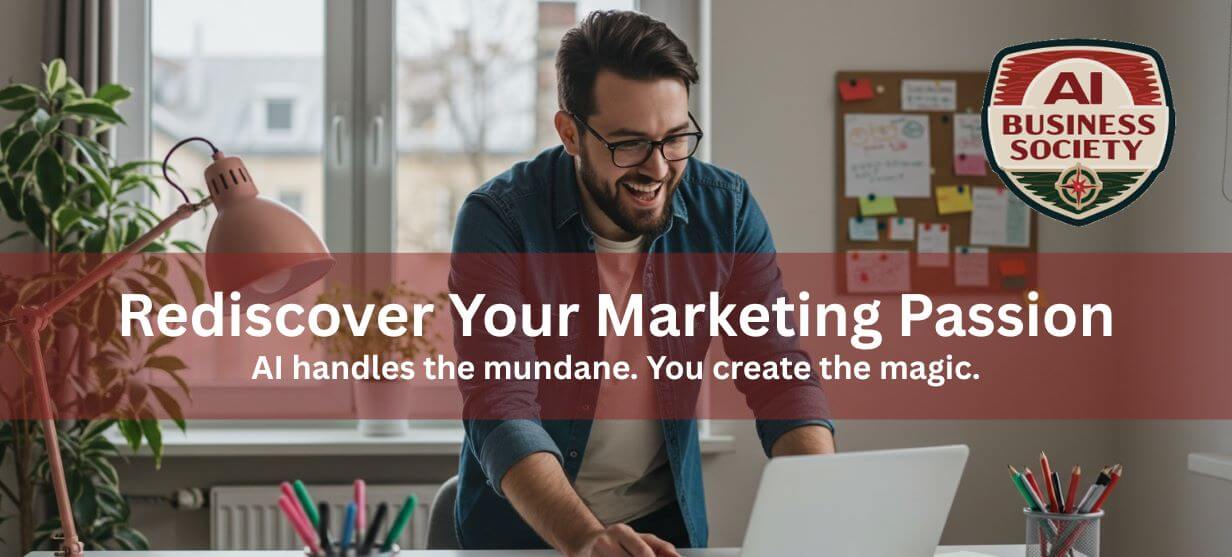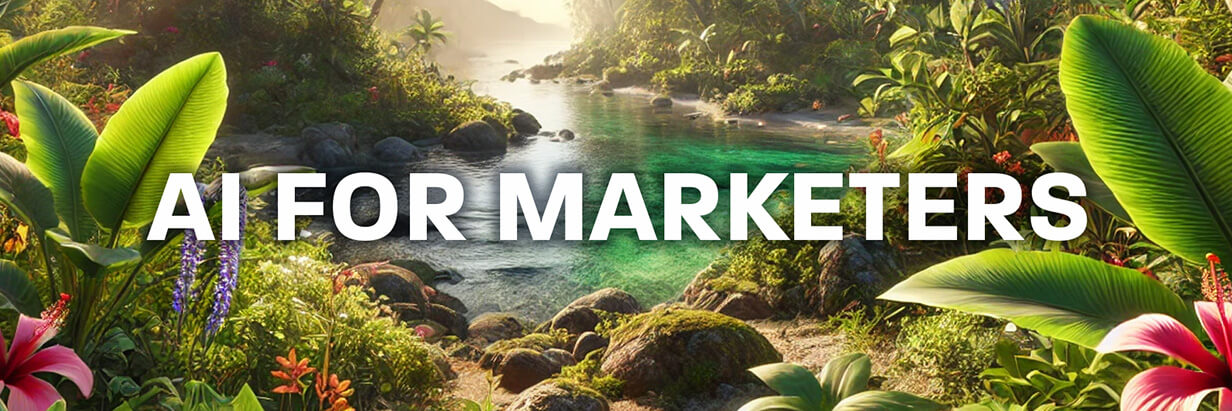Today's Guide to the Marketing Jungle from Social Media Examiner...
presented by 
The weekend is almost here, Alluser! Before you unplug, here's one last round of insights and updates. Whether you read them now or save them for later, you won't want to miss these.
In today's edition:
-
Content that reaches more customers via shares on Instagram
-
A PSA for marketers who use their personal devices
-
Leveraging your customer successes to drive real business results
-
3 strategic AI prompts for marketers
-
🗞️ Industry news from Gemini, Pinterest, and more

10 Types of Content for Shares on Instagram
Instagram isn't just a scroll-and-go app anymore—it's becoming a search engine. And that shift is changing the game for marketers.
If your content isn't being shared, it's likely not being found. Today's algorithm favors posts that spark saves, shares, and conversations—think curated lists, insightful breakdowns, personal takes, and even nostalgic nods. It's not about going viral; it's about offering enough clarity, value, or emotional resonance that someone wants to pass it along.
For AI-curious and tech-savvy marketers navigating this blend of social and search, the opportunity is clear: optimize for shareability without losing your voice. You're not just creating content, you're building digital breadcrumbs that help future followers find (and trust) you.
Chelsea Peitz dives into the 10 kinds of content that are most likely to be shared. Read more here.
Securing Your Personal and Professional Media From Meta
Have you seen a prompt in your Facebook app asking you to sync your private photos? Meta is testing a "helpful" new feature that scans your camera roll for screenshots of tickets, calendars, and receipts—all in the name of organization. But for many business marketers, this feels less like convenience and more like surveillance.
Mari Smith warns that even if Meta swears these photos aren't currently being used to train AI, the data access alone raises red flags. And for AI-curious and tech-savvy marketers juggling client trust, brand safety, and personal data boundaries, it's a slippery slope.
Want to know what to watch for—and how to opt out? Read more here.

Focus on What You Love Again
Remember why you became a marketer? To create breakthrough campaigns and drive real results? But somewhere along the way, things changed.
Today, you can rediscover your passion for marketing. AI can handle the mundane tasks, so you can focus on the work that energizes you and truly matters.
And the AI Business Society can help.
"The AI Business Society has renewed my enthusiasm and given me more confidence to step out and explore more opportunities," said member Carolyn Jeffrey.
Yes, I'm ready to rediscover my marketing passion.

Making Customer Stories Profitable: A Proven Framework
Not every customer story follows the same format or serves the same purpose. Understanding various story types helps you match the right narrative approach to your specific business objectives.
5 Types of Customer Stories to Use In Your Marketing
Switcher Stories
Switcher stories focus on customers who moved from a competitor's solution to yours. These narratives are particularly valuable when you're competing directly against established players in your market. The key elements to capture include why they made the switch, what prompted the decision, and what made your solution the right choice.
These stories prove especially powerful because they address prospects who are inevitably considering similar transitions. Rather than relying on feature comparison charts, switcher stories provide real-world evidence from someone who has experienced both solutions.
Disambiguator Stories
Disambiguator stories help translate your value proposition when entering new markets or appealing to different roles. These narratives take successful implementations from existing markets and make them relevant to new audiences who may not speak the same language or prioritize the same outcomes.
A practical example involves an industrial air filtration company that traditionally served fiberglass manufacturing clients. When COVID created opportunities in the gym market, they needed to translate their compliance-focused messaging into peace-of-mind benefits that gym owners cared about. The same technology that helped manufacturers meet regulatory requirements could help fitness centers provide safe environments for their members.
These stories work by taking existing client successes and reframing them in terms that resonate with new market segments. You can use either existing customer stories that happen to serve new markets or translate current stories to show how your value applies to different industries.
Onboarding and Implementation Stories
Many companies wait until the entire customer relationship has run its course before creating stories. However, for organizations where getting implemented or installed presents challenges for prospects, the onboarding process itself becomes compelling story material.
Implementation stories focus specifically on successful installations, smooth transitions, or effective onboarding experiences. Prospects often worry about the complexity of switching solutions or integrating new systems. Reading about other successful implementations can remove significant barriers to purchase decisions.
Upgrader Stories
Upgrader stories feature customers who decided to move to higher service tiers or premium product levels. These narratives capture why clients made upgrade decisions and how their results improved with enhanced offerings.
These stories serve dual purposes. They can influence new prospects to choose premium options from the start, and they can encourage existing customers to consider upgrades. When current clients read about others achieving better results with premium features, they become more likely to invest in higher-value offerings.
Playbook-Style Stories
Some companies create stories that read more like instructional guides than traditional case studies. Mutiny HQ provides excellent examples of this approach with their customer playbooks. These stories focus on the ingenuity of the client and teach prospects with similar problems how to use your tools to solve challenges.
Rather than positioning your product as the primary solution, playbook stories highlight customer creativity while demonstrating practical applications. They start with clear learning objectives and provide step-by-step insights that prospects can apply to their own situations.
Other topics discussed include:
-
What You Need to Consider Before Building Customer Success Stories
-
The Six-Sentence Ask Framework for Collecting Customer Stories
-
4 Types of Questions to Ask Customers During the Interview
-
How to Craft Your Customer Story for Maximum Impact
-
The Nibble-Bite-Snack-Meal-Buffet Framework for Customer Story Distribution
Today's advice is provided with insights from Joel Klettke, a featured guest on the Social Media Marketing Podcast.
Watch the full interview on YouTube
3 Strategic AI Prompts to Change Your Marketing
Basic ChatGPT usage is everywhere, but it's not what you need to gain serious competitive advantages. Jay Schwedeleson has three prompts to help you with three specific and strategic use cases.
Take Answer Engine Optimization—only 7% of websites are optimized for it, which means when prospects search AI for solutions in your space, your competition probably isn't showing up. But you could be.
Then there's the newsletter intelligence play. Instead of guessing what industry publications matter, there's a systematic way to identify which email newsletters your ideal customers are reading, to understand where attention flows in your market.
And AI-powered account-based marketing that goes way beyond basic lead scoring. Imagine target account lists that would normally take weeks of research, complete with buying signals, tech stack analysis, and contact intelligence—all generated in minutes.
Read more here.

Gemini Brings Still Images to Life With Photo‑to‑Video Animation: Google is introducing a new photo‑to‑video feature in its Gemini app, enabling Google AI Pro and Ultra subscribers in over 150 countries to convert static images into dynamic eight‑second videos with audio using the Veo 3 model. This update complements Veo 3's prior success—over 40 million short clips created in just seven weeks—demonstrating the model's appeal. Users simply select "Videos," upload a photo, and add prompts and sound instructions to animate everyday scenes, drawings, or nature shots, which can then be shared or downloaded. Gemini also incorporates multiple safety measures, including visible and digital watermarks, ongoing red‑teaming, content filters, and feedback mechanisms to ensure responsible use. Gemini
Perplexity Launches Comet, an AI Browser With Built-In Assistant: Perplexity has introduced Comet, an AI-powered web browser designed to reimagine how users engage with the internet—from passive consumption to intelligent interaction. Built around the Comet Assistant, the browser enables users to ask contextual questions, automate tasks, and manage entire workflows conversationally. With a focus on accuracy and curiosity, Comet acts as an extension of the user's mind, offering proactive support for tasks like research, communication, and decision-making. Comet is available now to Perplexity Max subscribers, with broader invite-based access rolling out this summer. Perplexity
Meta Enhances Partnership Ads API With AI and Format Flexibility: Meta has introduced new features to its Partnership Ads API, including AI-based recommendations for branded content, a flexible ad header format that dynamically optimizes visibility between brands and partners, and improved Instagram-to-Facebook video uploads via ad code. Additionally, the Instagram Content Publishing API now supports Stories and allows up to 100 posts daily across all formats. These enhancements aim to improve monetization workflows for creators and reduce friction for developers working with partnership ads. Meta
Pinterest Shares Men's Trend Report: Pinterest has released its inaugural Men's Trend Report, showing that male users—especially Gen Z (18–27) and Millennials (28–43)—now make up over one-third of its global platform, around 205 million people. These users are gravitating toward positive, authentic content, rejecting toxic social norms and instead focusing on wellness, self-care, style, technology, and finance. Fitness trends like Pilates and rock climbing have seen surges of +300% and +95%, respectively, while grooming and style searches reveal a growing interest in skincare (+45%), male makeup (+50%), beard design (+205%), and alternative fashion aesthetics. Technologically savvy men are exploring 3D printing (+1210%) and AI video (+800%), alongside an increased emphasis on financial planning tools (+620% for investment apps). In response, Pinterest has launched a new "Pinterest Man" profile, a curated hub for trend discovery and shopping in men's lifestyle spaces. Pinterest
YouTube Phase‑Out of Trending Tab to Take Effect July 21, 2025: YouTube will officially retire its Global Trending page and Trending Now list on July 21, 2025, moving toward YouTube Charts—a new system showcasing top content across specific categories such as music, podcasts, and movie trailers. Gaming trends will continue on the Gaming Explore page. The decision reflects the platform's focus on providing personalized recommendations and leveraging AI-driven tools like the Inspiration Tab in YouTube Studio. YouTube notes the Trending page no longer aligns with how users discover viral content, shifting the emphasis toward category-based charts and algorithmic suggestions. Google
YouTube Adds Channel Insights Sharing and Expands Creator Tools: YouTube has launched a new setting in Studio allowing eligible creators to share aggregated channel and audience insights with advertisers and third-party platforms to enhance monetization opportunities. The update supports a new Creator Partnership Hub, where all YouTube Partner Program creators are searchable, with added visibility for those who opt into insights sharing. Additionally, YouTube is enforcing stricter product tagging guidelines for Shopping Affiliate creators, expanding channel membership badges to 10 years, and introducing a "Pull to Refresh" feature for easier content updates on channel pages. YouTube
What Did You Think of Today's Newsletter?
Did You Know?
Blue and true purple carnations are a modern invention: These colors did not exist naturally and were only created through bioengineering by introducing genes from petunias and snapdragons.

Michael Stelzner, Founder and CEO
P.S. Add
michael@socialmediaexaminer.com into your contacts list. Use Gmail?
Go here to add us as a contact.
We publish updates with links for our new posts and content from partners. Your information: Email:
tukangpostemel@gmail.com Opted in on: 2021-09-06 17:03:43 UTC.








